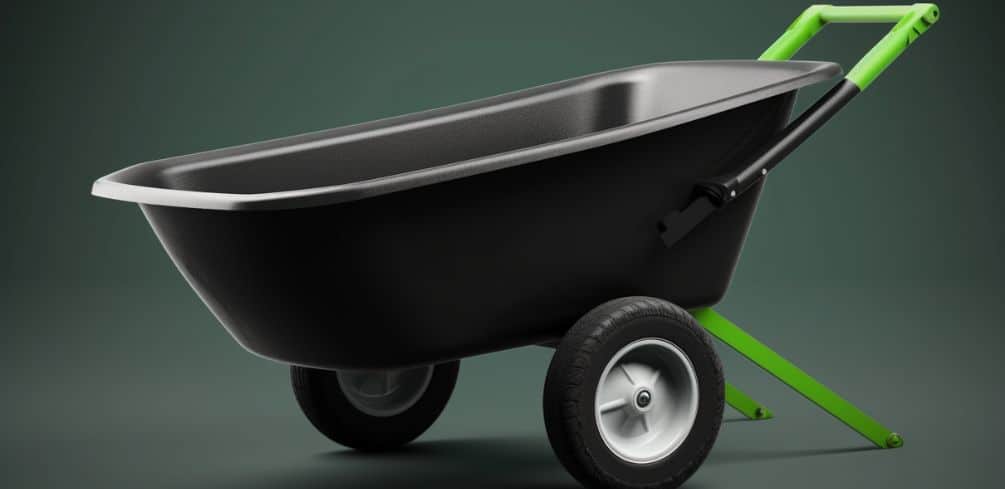Ah, the humble wheelbarrow tire – not something we often give much thought to until it goes flat right in the middle of a heavy-duty task, like setting up a backyard playground. You might be surprised to learn that there’s more to these seemingly simple tires than meets the eye.
As you embark on your quest for understanding, let’s delve into the world of wheelbarrow tires and answer an age-old question: do they have tubes or not?
Types of Wheelbarrow Tires
There’s a variety of wheelbarrow tire types, some with tubes and others without, each catering to different needs and preferences. When considering which type of tire is best for your wheelbarrow, it’s important to think about factors such as the materials you’ll be hauling, the terrain you’ll be working on, and how often you use your wheelbarrow.
Some common considerations include the durability of the tire, whether it’s pneumatic or solid, and how easy it is to replace or maintain. Additionally, inflation techniques may come into play when deciding between tubeless and tubed tires.
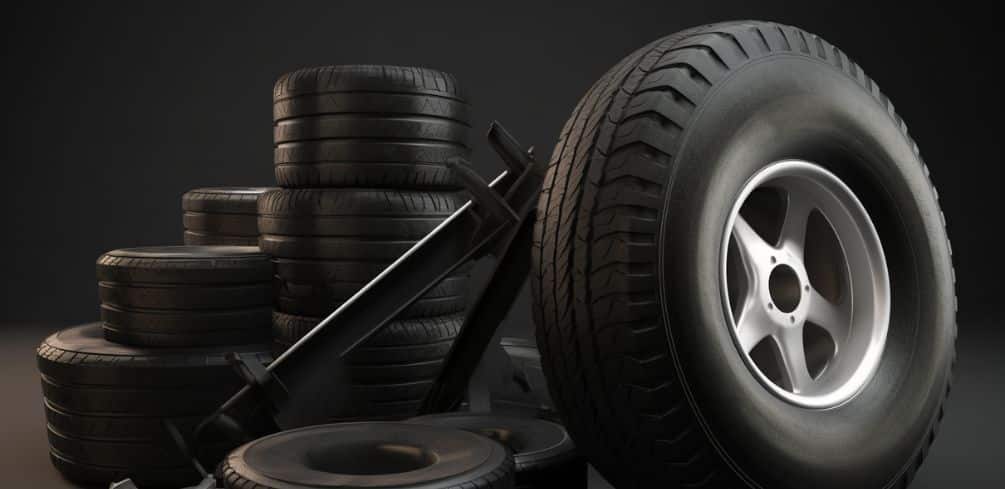
Pneumatic tires are air-filled and typically have tubes inside them. These tires offer a smoother ride over rough terrain due to their ability to absorb shocks from bumps and uneven surfaces.
They also provide better traction on soft ground like sand or mud.
However, they do require regular inflation checks and can be punctured easily by sharp objects or heavy loads.
On the other hand, solid (also known as ‘flat-free’ or ‘foam-filled’) tires don’t have tubes but are made from dense foam-like materials that mimic air pressure without needing any inflation maintenance.
10″ Tires
Replacement Tires
No Flat Tire Worries Forever!Flat-free tires made of solid anti-puncture polyurethane foam
13″ Tires
Replacement Tires
Solid rubber tire resists punctures and does not go flat. Hub is made of polypropylene
While they’re more durable than pneumatic tires in terms of avoiding punctures, they might not provide as smooth a ride or as good traction on certain terrains.
Ultimately, choosing between these two options will depend on your specific needs in terms of wheelbarrow materials handling capacity, tire durability requirements, and desired level of maintenance effort (inflation vs. no inflation).
Pros and Cons of Tubeless Tires
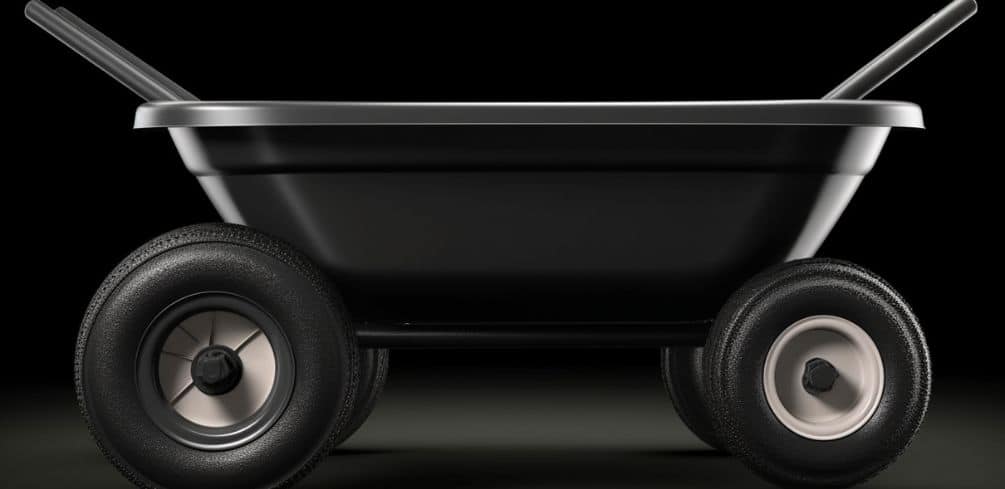
You might be weighing the pros and cons of tubeless tires to determine if they’re the right choice for your needs.
Tubeless wheelbarrow tires offer several advantages over their tubed counterparts, but they also come with a few drawbacks you should consider before making your decision.
To help you make an informed choice, let’s explore the following aspects of tubeless tires:
- Puncture resistance
One of the major benefits of tubeless tires is their enhanced puncture resistance. Since there’s no inner tube, there are fewer chances of getting a flat tire due to minor punctures caused by sharp objects like nails or glass shards on the ground.
Additionally, many tubeless wheelbarrow tires can self-seal minor punctures when used in combination with sealant, adding an extra layer of protection against flats during use.
- Air retention
On the other hand, air retention can be more challenging in tubeless setups because they rely solely on the seal between the tire and rim to maintain pressure; however, this may not always be as effective as traditional tubes at retaining air over time.
- Installation ease
Installation ease can vary depending on your wheelbarrow model and tire design–some models may require specialized tools or additional effort to get a proper seal compared to tubed options.
- Tire weight and terrain adaptability
Lastly, while some users find that tubeless tires have reduced overall weight due to eliminating inner tubes (which could potentially improve maneuverability), others may experience limitations in terrain adaptability when running lower pressures since these setups generally lack sidewall support provided by inner tubes for off-road situations or uneven surfaces where additional traction is needed.
Pros and Cons of Tubed Tires
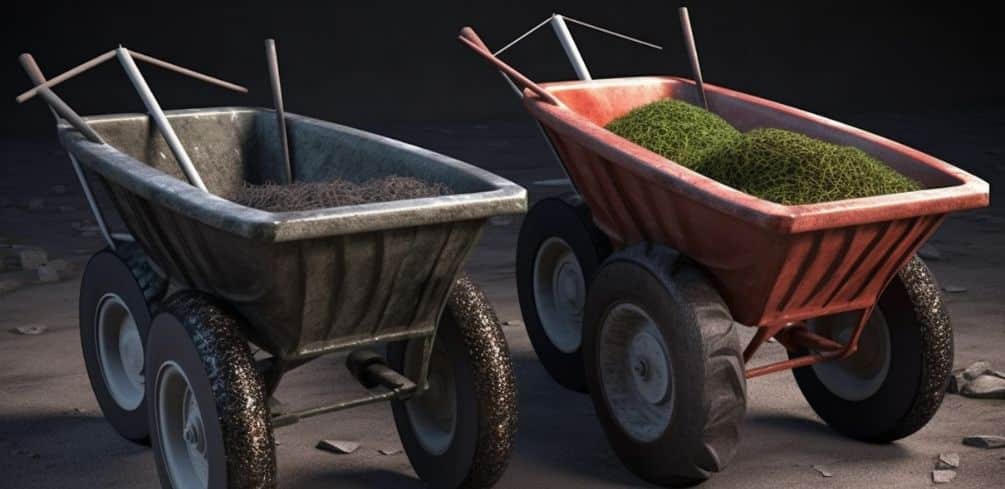
So, let’s dive into the world of tubed tires and explore their own set of advantages and drawbacks, shall we?
One significant advantage of tubed tires is their tire durability. The presence of an inner tube within the tire helps maintain proper inflation stability by distributing air pressure evenly throughout the tire. This ensures that your wheelbarrow rolls smoothly, even on rough terrain.
Tubed tires are also known for their ease of replacement. Should you experience a flat, simply remove the damaged inner tube and replace it with a new one – no need to replace the entire tire.
However, there are some downsides to using tubed tires as well. Puncture resistance tends to be lower in comparison to their tubeless counterparts since they rely solely on the thickness and quality of both the outer tire and inner tube for protection against punctures.
Additionally, when it comes time for cost comparison, tubed tires may be more expensive in the long run due to frequent replacements needed if punctures often occur in your working environment.
Ultimately, deciding between tubed or tubeless wheelbarrow tires will depend on factors such as your budget, frequency of use, and types of surfaces you’ll encounter most often while using your wheelbarrow – so consider these aspects carefully before making your decision!
Maintenance Tips for Optimal Performance
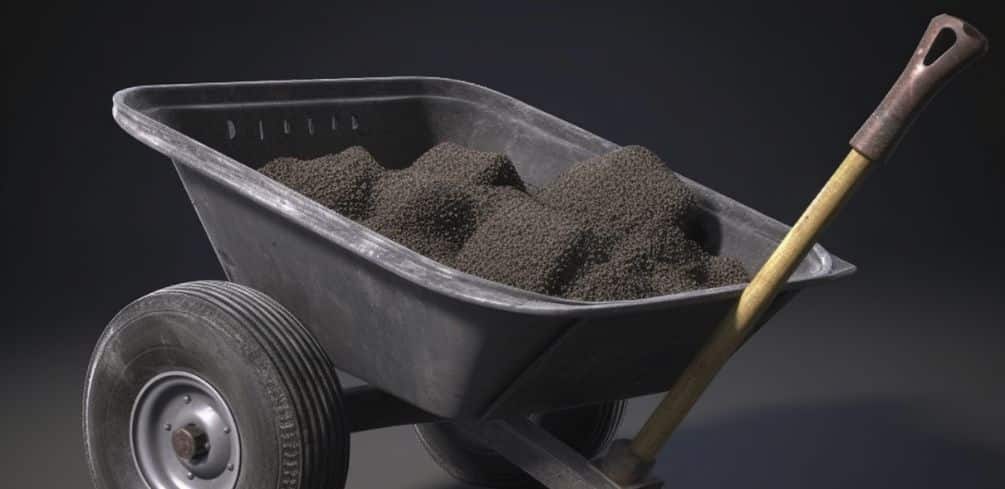
Keeping your trusty work companion in top-notch condition is crucial for smooth rides and efficient load-bearing, regardless of whether you are sporting tubed or tubeless tires.
Maintaining the correct tire pressure is key to optimal performance; under-inflated tires make it harder to maneuver the wheelbarrow, while over-inflated ones are more prone to punctures.
Also, make sure you are carrying the right amount of dirt in the wheelbarrow.
Regularly check your tire pressure with a gauge and inflate it according to the manufacturer’s recommendations.
Lubricating axles helps reduce friction, ensuring smoother movement and reducing wear on parts; use a grease gun to apply the lubricant at least once a season or more frequently if you’re using your wheelbarrow heavily.
Weight distribution plays a significant role in ease of use – avoid overloading and distribute weight evenly across the entire length of the barrow. Make sure to get the best wheelbarrow for your yard.
Proper storage is essential for prolonging the life of your wheelbarrow – keep it away from direct sunlight, as UV rays can damage both rubber tires and plastic components, causing them to degrade faster.
Store it in a cool, dry place (preferably indoors), and cover it with a tarpaulin if necessary. Regular cleaning keeps your wheelbarrow looking good and helps identify potential problems early on – remove dirt, debris, and mud buildup after each use with water and mild soap (avoid harsh chemicals that may cause corrosion).
Inspect your wheelbarrow during cleanings for any signs of damage or wear, such as cracks, punctures, or loose bolts; address these issues promptly to avoid further complications. By following these maintenance tips consistently, you’ll ensure your trusty work companion remains reliable throughout its lifespan!
Conclusion
So, you might be thinking that choosing between tubed and tubeless wheelbarrow tires is a tough call. But don’t stress!
By weighing the pros and cons of each type, you’ll easily find the best fit for your needs.
Remember to keep up with regular maintenance for optimal performance, regardless of which tire type you choose. With the right care, your wheelbarrow will be ready to tackle any task easily.
Happy hauling!
